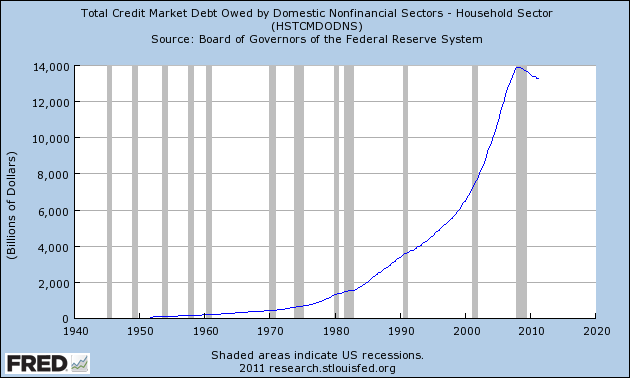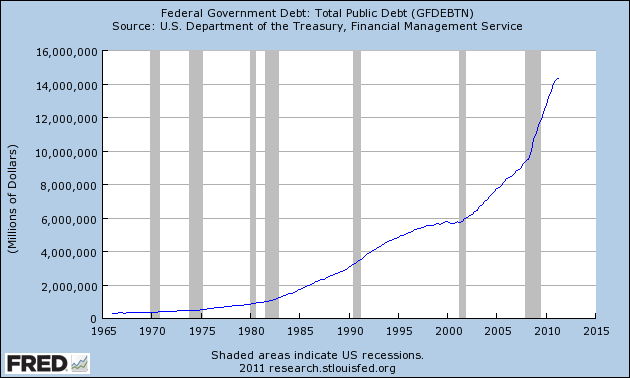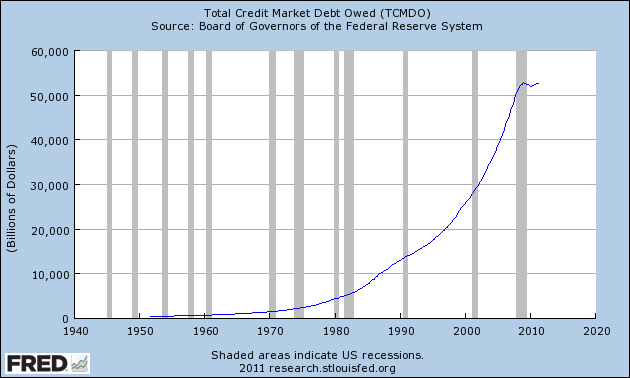 Once upon a time, the United States had the largest and most vibrant middle class that the world has ever seen. Unfortunately, that is rapidly changing. The statistics that you are about to read prove beyond a reasonable doubt that the U.S. middle class is dying right in front of our eyes as we enter 2012. The decline of the middle class is not something that has happened all of a sudden. Rather, there has been a relentless grinding down of the middle class over the last several decades. Millions of our jobs have been shipped overseas, the rate of inflation has far outpaced the rate that our wages have grown, and overwhelming debt has choked the financial life out of millions of American families. Every single day, more Americans fall out of the middle class and into poverty. In fact, more Americans fell into poverty last year than has ever been recorded before. The number of middle class jobs and middle class neighborhoods continues to decline at a staggering pace. As I have written about previously, America as a whole is getting poorer as a nation, and as this happens wealth is becoming increasingly concentrated at the very top of the income scale. This is not how capitalism is supposed to work, and it is not good for America.
Once upon a time, the United States had the largest and most vibrant middle class that the world has ever seen. Unfortunately, that is rapidly changing. The statistics that you are about to read prove beyond a reasonable doubt that the U.S. middle class is dying right in front of our eyes as we enter 2012. The decline of the middle class is not something that has happened all of a sudden. Rather, there has been a relentless grinding down of the middle class over the last several decades. Millions of our jobs have been shipped overseas, the rate of inflation has far outpaced the rate that our wages have grown, and overwhelming debt has choked the financial life out of millions of American families. Every single day, more Americans fall out of the middle class and into poverty. In fact, more Americans fell into poverty last year than has ever been recorded before. The number of middle class jobs and middle class neighborhoods continues to decline at a staggering pace. As I have written about previously, America as a whole is getting poorer as a nation, and as this happens wealth is becoming increasingly concentrated at the very top of the income scale. This is not how capitalism is supposed to work, and it is not good for America.
Today I went over to Safeway and I was absolutely appalled at the prices. I honestly don’t know how most families make it these days. I ended up paying over 140 dollars for about two-thirds of a cart of food. That was after I “saved” 67 dollars on sale items.
When the cost of the basic things that we need – housing, food, gas, electricity – go up faster than our incomes do, that means that we are getting poorer.
Sadly, if you look at the long-term numbers, some very clear negative trends emerge….
-The number of good jobs continues to decrease.
-The rate of inflation continues to outpace the rate that our wages are going up.
-American consumers are going into almost unbelievable amounts of debt.
-The number of Americans that are considered to be “poor” continues to grow.
-The number of Americans that are forced to turn to the government for financial assistance continues to go up.
After you read the information below, it should become abundantly clear that the U.S. middle class is in a whole heap of trouble.
The following are 30 statistics that show that the middle class is dying right in front of our eyes as we enter 2012….
#1 Today, only 55.3 percent of all Americans between the ages of 16 and 29 have jobs.
#2 In the United States today, there are 240 million working age people. Only about 140 million of them are working.
#3 According to CareerBuilder, only 23 percent of American companies plan to hire more employees in 2012.
#4 Since the year 2000, the United States has lost 10% of its middle class jobs. In the year 2000 there were about 72 million middle class jobs in the United States but today there are only about 65 million middle class jobs.
#5 According to the New York Times, approximately 100 million Americans are either living in poverty or in “the fretful zone just above it”.
#6 According to that same article in the New York Times, 34 percent of all elderly Americans are living in poverty or “near poverty”, and 39 percent of all children in America are living in poverty or “near poverty”.
#7 In 1984, the median net worth of households led by someone 65 or older was 10 times larger than the median net worth of households led by someone 35 or younger. Today, the median net worth of households led by someone 65 or older is 47 times larger than the median net worth of households led by someone 35 or younger.
#8 Since the year 2000, incomes for U.S. households led by someone between the ages of 25 and 34 have fallen by about 12 percent after you adjust for inflation.
#9 The total value of household real estate in the U.S. has declined from $22.7 trillion in 2006 to $16.2 trillion today. Most of that wealth has been lost by the middle class.
#10 Many formerly great manufacturing cities are turning into ghost towns. Since 1950, the population of Pittsburgh, Pennsylvania has declined by more than 50 percent. In Dayton, Ohio 18.9 percent of all houses now stand empty.
#11 Since 1971, consumer debt in the United States has increased by a whopping 1700%.
#12 The number of pages of federal tax rules and regulations has increased by 18,000% since 1913. The wealthy know how to avoid taxes, but most of those in the middle class do not.
#13 The number of Americans that fell into poverty (2.6 million) set a new all-time record last year and extreme poverty (6.7%) is at the highest level ever measured in the United States.
#14 According to one study, between 1969 and 2009 the median wages earned by American men between the ages of 30 and 50 dropped by 27 percent after you account for inflation.
#15 According to U.S. Representative Betty Sutton, America has lost an average of 15 manufacturing facilities a day over the last 10 years. During 2010 it got even worse. Last year, an average of 23 manufacturing facilities a day shut down in the United States.
#16 Back in 1980, less than 30% of all jobs in the United States were low income jobs. Today, more than 40% of all jobs in the United States are low income jobs.
#17 Most Americans are scratching and clawing and doing whatever they can to make a living these days. Half of all American workers now earn $505 or less per week.
#18 Food prices continue to rise at a very brisk pace. The price of beef is up 9.8% over the past year, the price of eggs is up 10.2% over the past year and the price of potatoes is up 12% over the past year.
#19 Electricity bills in the United States have risen faster than the overall rate of inflation for five years in a row.
#20 The average American household will have spent a staggering $4,155 on gasoline by the end of 2011.
#21 If inflation was measured the exact same way that it was measured back in 1980, the rate of inflation in the United States would be well over 10 percent.
#22 If the number of Americans considered to be “looking for work” was the same today as it was back in 2007, the “official” unemployment rate put out by the U.S. government would be up to 11 percent.
#23 According to the Student Loan Debt Clock, total student loan debt in the United States will surpass the 1 trillion dollar mark at some point in 2012. Most of that debt is owed by members of the middle class.
#24 Incredibly, more than one out of every seven Americans is on food stamps and one out of every four American children is on food stamps at this point.
#25 Since Barack Obama took office, the number of Americans on food stamps has increased by 14.3 million.
#26 In 2010, 42 percent of all single mothers in the United States were on food stamps.
#27 In 1970, 65 percent of all Americans lived in “middle class neighborhoods”. By 2007, only 44 percent of all Americans lived in “middle class neighborhoods”.
#28 According to a recent report produced by Pew Charitable Trusts, approximately one out of every three Americans that grew up in a middle class household has slipped down the income ladder.
#29 In the United States today, the wealthiest one percent of all Americans have a greater net worth than the bottom 90 percent combined.
#30 The poorest 50 percent of all Americans now collectively own just 2.5% of all the wealth in the United States.
Sadly, this article could have been much, much longer. There are so many other statistics about the middle class that could have been included.
For even more insane economic numbers that show just how dramatically the U.S. economy is declining, just check out this article: “50 Economic Numbers From 2011 That Are Almost Too Crazy To Believe“.
What is even more frightening is that this is about as good as things are going to get.
We have already had “the economic recovery”, such as it was.
Now we are heading for another major financial crisis. Just like back in 2008, the entire world is going to feel the pain.
But we never recovered from the last financial crisis. We are like a boxer that is not ready to handle another blow.
And who is going to get hurt the most? It will be those at the bottom of the food chain of course. Tens of millions of Americans that are living in poverty will experience a massive amount of pain, and millions more Americans will fall out of the middle class and will join them.
If you have a good job, do your best to hang on to it. If you don’t have a job, do your best to get one while you still can. Jobs will become very precious in the years ahead.
But also try to do what you can to become less dependent on the system. Almost anyone can find ways to make some extra money on the side. Yes, it will likely cut into your television time. If someday you were to lose your job you don’t want to be left with zero income.
Right now, the U.S. economy is slowly dying and as time goes by the number of middle class Americans it will be able to support will continue to decrease.
Yes, it is like a perverse game of musical chairs, but this is where we are at.
I encourage all of you to think about how you plan to make it through the collapse that is ahead.
Sticking our heads in the sand and pretending that everything is going to be okay is not going to help anyone.
But if we all start planning for the storm that is ahead, and if we get others around us to wake up as well, that is going to do a great deal of good in the long run.









